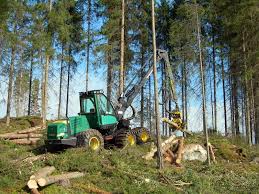Stamp: Field-protective forestation (Soviet Union, USSR 1949)
Field-protective forestation (Soviet Union, USSR 1949)
01 January (Soviet Union, USSR ) within release 10th Anniversary of Reunion of W.Ukraine and W.Belarus goes into circulation Stamp Field-protective forestation face value 1 Russian ruble
| Stamp Field-protective forestation in catalogues | |
|---|---|
| Michel: | Mi:SU 1389 |
Stamp is square format.
Also in the issue 10th Anniversary of Reunion of W.Ukraine and W.Belarus:
- Stamp - Coat of Arms of Byelorussian SSR face value 40;
- Stamp - Lenin's Mausoleum face value 40;
- Stamp - Vasily Williams (1863-1939), Russian and Soviet agronomist face value 25;
- Stamp - Soviet woman in Textile industry face value 20;
- Stamp - Soviet woman in Pre-school Education face value 25;
- Stamp - Soviet woman in the management of state affairs face value 40;
- Stamp - Women in Socialistic Agriculture face value 50;
- Stamp - Soviet schoolmistress face value 50;
- Stamp - Soviet woman in mass sport face value 1;
- Stamp - Stepan O. Makarov (1849-1904), Russian naval commander face value 40;
- Stamp - The Building Of Military medic academy face value 40;
- Stamp - S. Botkin, N. Pirogov, I. Sechenov & Military medic academy face value 50;
- Stamp - Miner with coal hammer face value 15;
- Stamp - Scientist at microscope face value 30;
- Stamp - Coat of Arms of the USSR face value 40;
- Stamp - Working people with May Day banner face value 40;
- Stamp - Soviet newspapers and works by Marx, Lenin, Stalin face value 40;
- Stamp - Alexander Popov, inventor of radio face value 40;
- Stamp - A.Popov shows the world's first radioset to admiral Makarov face value 50;
- Stamp - Alexander S. Pushkin (1799-1837), Russian author face value 25;
- Stamp - A.S. Pushkin among his friends in Kamenka face value 40;
- Stamp - Boldino State Literary Memorial and Museum of A. Pushkin face value 1;
- Stamp - Ivan Michurin (1855-1935), Russian botanist and selectionist face value 40;
- Stamp - Tugboat face value 40;
- Stamp - Vasily V. Dokuchayev (1846-1903), Russian geologist face value 40;
- Stamp - Vasily I. Bazhenov (1737/38-1799), Russian architect face value 40;
- Stamp - Alexander N. Radishchev (1749-1802), Russian author face value 40;
- Stamp - Khosta: Sanatorium of the Ministry of Communications face value 40;
- Stamp - Khosta: Sanatorium #3 of Trade unions of USSR face value 40;
- Stamp - Khosta: Sanatorium of power engineering specialists face value 40;
- Stamp - Zheleznovodsk: Sanatorium #41 of Trade unions of USSR face value 40;
- Stamp - Sochi: State Theatre face value 40;
- Stamp - Sochi: Frunze Sanatorium face value 40;
- Stamp - Makhinjauri: Sanatorium "Zelyony mys" of Trade Unions face value 40;
- Stamp - Kislovodsk: Sanatorium #1 of Trade unions of USSR face value 40;
- Stamp - Kislovodsk: Sanatorium #3 of Trade unions of USSR face value 40;
- Stamp - Ivan P. Pavlov (1849-1936), Russian physiologist face value 40;
- Stamp - The Globe belted with envelopes face value 40;
- Stamp - The Globe belted with envelopes face value 40;
- Stamp - Field-protective forestation face value 25;
- Stamp - Forest shelterbelts to collective farm fields face value 40;
- Stamp - Map of forest shelterbelts and field-protective forest face value 40;
- Stamp - Build ponds and reservoirs! face value 50;
- Stamp - Field-protective forestation face value 1;
- Stamp - Vasily I. Chapayev (1887-1919), Hero of Civil War face value 40;
- Stamp - Ivan S. Nikitin (1824-1861), Russian poet face value 40;
- Stamp - The building of Maly Theatre and Order of Lenin face value 40;
- Stamp - Maly Theater face value 50;
- Stamp - People's parade on Red square face value 40;
- Stamp - Cattle (Bos primigenius taurus), Sheep (Ovis ammon aries), M face value 40;
- Stamp - Gymnastics. Female gymnast on rings. face value 40;
- Stamp - Weightlifting face value 1;
- Stamp - Four-axle full-metal tramcar (MTV-82) face value 25;
- Stamp - Freight steam locomotive (class "L", config. 1-5-0) face value 50;
- Stamp - Coat of Arms and State Flag of the USSR face value 40;
- Stamp - Textile industrial complex. Cotton and trucks. face value 20;
- Stamp - Irrigation System face value 25;
- Stamp - The House of the Government of Tajik SSR in Stalinabad face value 40;
- Stamp - Medical college and Teacher's training college in Stalinabad face value 50;
- Stamp - Reunion of Western Byelorussia with Byelorussian SSR face value 40;
- Stamp - Worker with flag behind globe face value 40;
|
Data entry completed
43%
|
|
|---|---|
| Stamp Field-protective forestation in digits | |
| Country: | Soviet Union, USSR |
| Date: | 1949-01-01 |
| Format: | Stamp |
| Face Value: | 1 Russian ruble |
Stamp Field-protective forestation it reflects the thematic directions:
In botany, a tree is a perennial plant with an elongated stem, or trunk, supporting branches and leaves in most species. In some usages, the definition of a tree may be narrower, including only woody plants with secondary growth, plants that are usable as lumber or plants above a specified height. Trees are not a taxonomic group but include a variety of plant species that have independently evolved a woody trunk and branches as a way to tower above other plants to compete for sunlight. In looser senses, the taller palms, the tree ferns, bananas and bamboos are also trees. Trees tend to be long-lived, some reaching several thousand years old. The tallest known tree, a coast redwood named Hyperion, stands 115.6 m (379 ft) high. Trees have been in existence for 370 million years. It is estimated that there are just over 3 trillion mature trees in the world. A tree typically has many secondary branches supported clear of the ground by the trunk. This trunk typically contains woody tissue for strength, and vascular tissue to carry materials from one part of the tree to another. For most trees it is surrounded by a layer of bark which serves as a protective barrier. Below the ground, the roots branch and spread out widely; they serve to anchor the tree and extract moisture and nutrients from the soil. Above ground, the branches divide into smaller branches and shoots. The shoots typically bear leaves, which capture light energy and convert it into sugars by photosynthesis, providing the food for the tree's growth and development. Flowers and fruit may also be present, but some trees, such as conifers, instead have pollen cones and seed cones; others, such as tree ferns, produce spores instead. Trees play a significant role in reducing erosion and moderating the climate. They remove carbon dioxide from the atmosphere and store large quantities of carbon in their tissues. Trees and forests provide a habitat for many species of animals and plants. Tropical rainforests are one of the most biodiverse habitats in the world. Trees provide shade and shelter, timber for construction, fuel for cooking and heating, and fruit for food as well as having many other uses. In parts of the world, forests are shrinking as trees are cleared to increase the amount of land available for agriculture. Because of their longevity and usefulness, trees have always been revered, with sacred groves in various cultures, and they play a role in many of the world's mythologies.
An economy is an area of the production, distribution and trade, as well as consumption of goods and services. In general, it is defined as a social domain that emphasize the practices, discourses, and material expressions associated with the production, use, and management of resources. A given economy is a set of processes that involves its culture, values, education, technological evolution, history, social organization, political structure, legal systems, and natural resources as main factors. These factors give context, content, and set the conditions and parameters in which an economy functions. In other words, the economic domain is a social domain of interrelated human practices and transactions that does not stand alone.
Agriculture is the cultivation and breeding of animals, plants and fungi for food, fiber, biofuel, medicinal plants and other products used to sustain and enhance human life.[1] Agriculture was the key development in the rise of sedentary human civilization, whereby farming of domesticated species created food surpluses that nurtured the development of civilization. The study of agriculture is known as agricultural science. The history of agriculture dates back thousands of years, and its development has been driven and defined by greatly different climates, cultures, and technologies. Industrial agriculture based on large-scale monoculture farming has become the dominant agricultural methodology.
Forestry is the science and craft of creating, managing, planting, using, conserving and repairing forests and woodlands for associated resources for human and environmental benefits. Forestry is practiced in plantations and natural stands. The science of forestry has elements that belong to the biological, physical, social, political and managerial sciences. Forest management plays an essential role in the creation and modification of habitats and affects ecosystem services provisioning
Flora is the plant life occurring in a particular region or time, generally the naturally occurring or indigenous—native plant life. The corresponding term for animal life is fauna. Flora, fauna and other forms of life such as fungi are collectively referred to as biota. Sometimes bacteria and fungi are also referred to as flora, as in the terms gut flora or skin flora.
Agricultural machinery is machinery used in farming or other agriculture. There are many types of such equipment, from hand tools and power tools to tractors and the countless kinds of farm implements that they tow or operate. Diverse arrays of equipment are used in both organic and nonorganic farming. Especially since the advent of mechanised agriculture, agricultural machinery is an indispensable part of how the world is fed.






